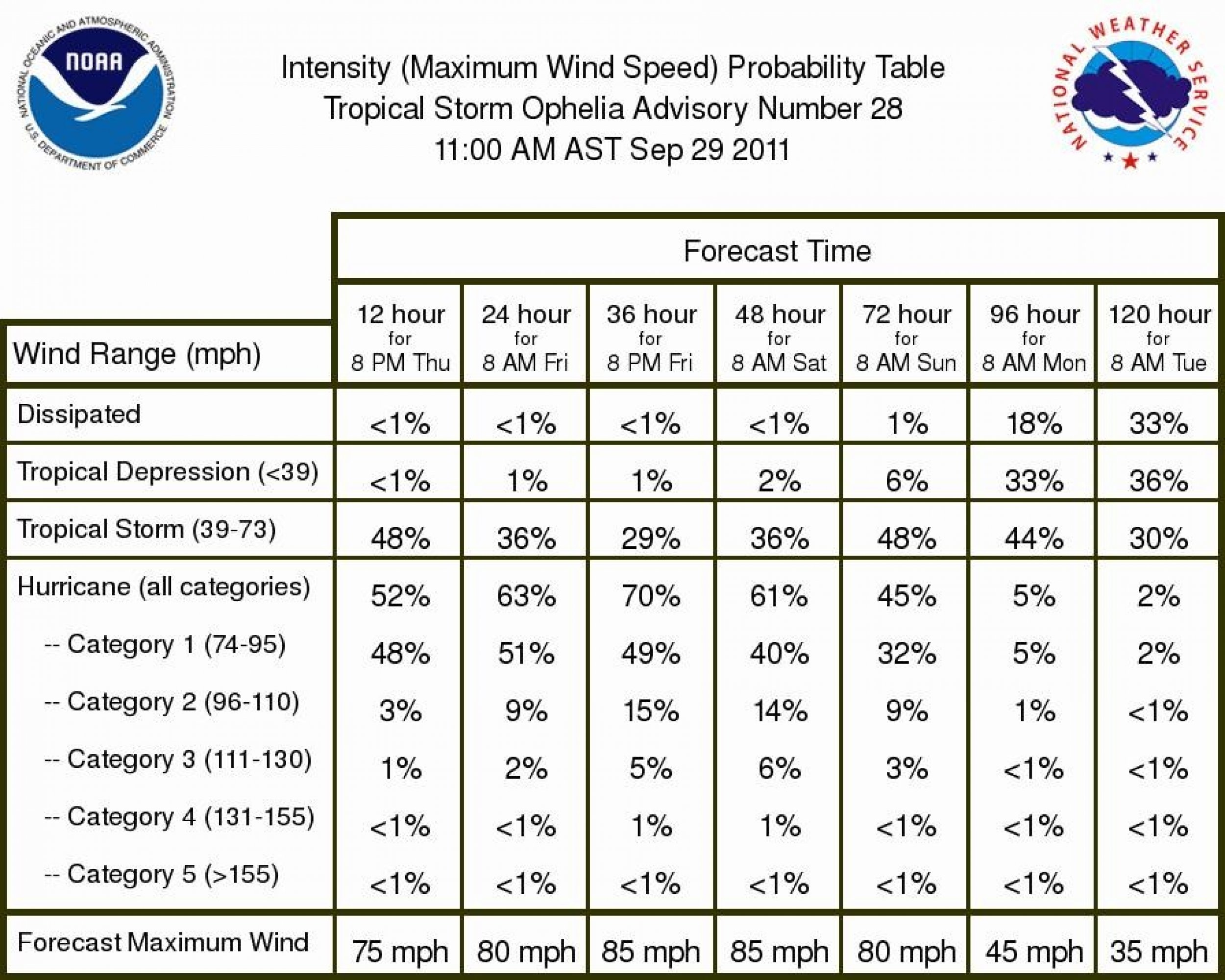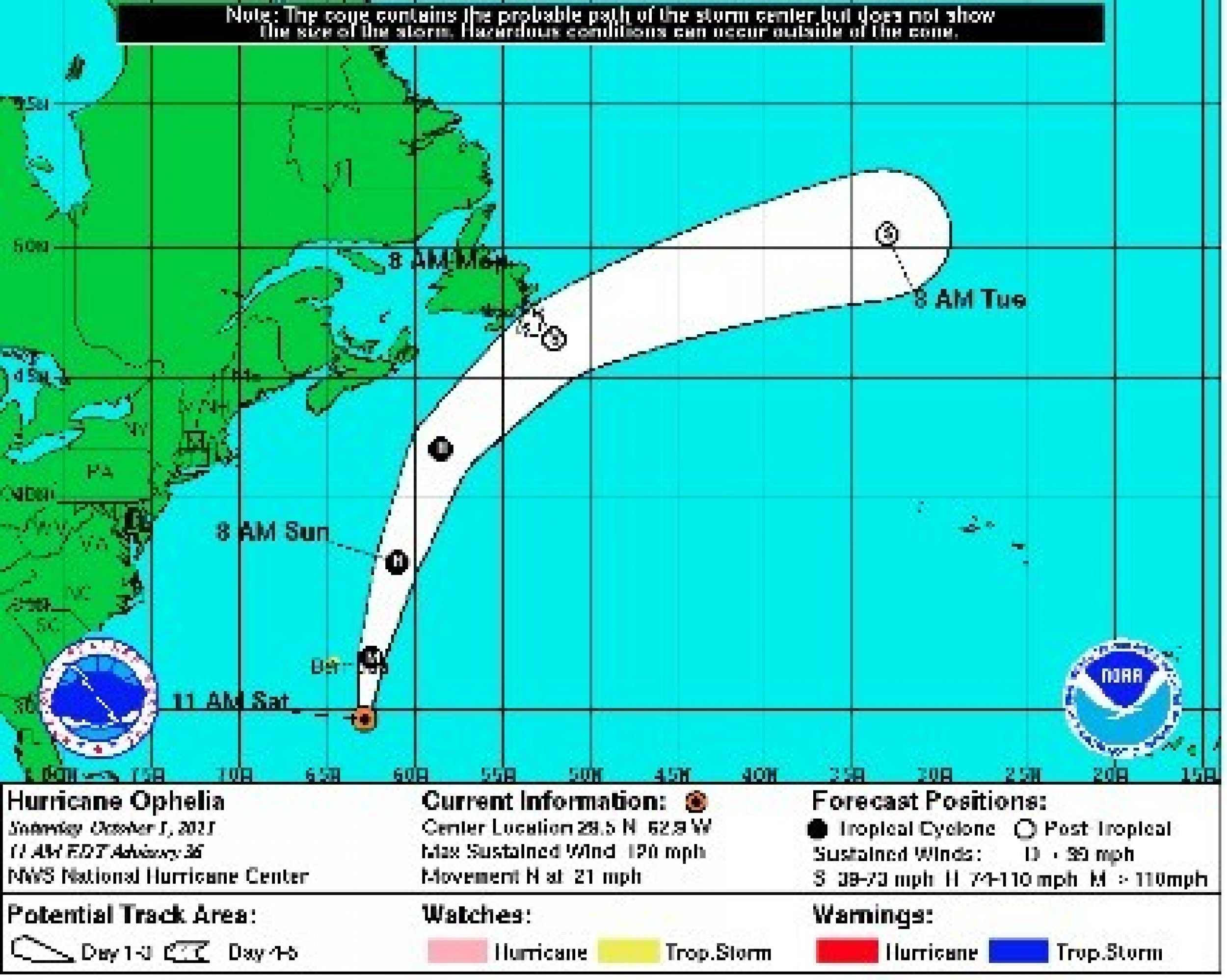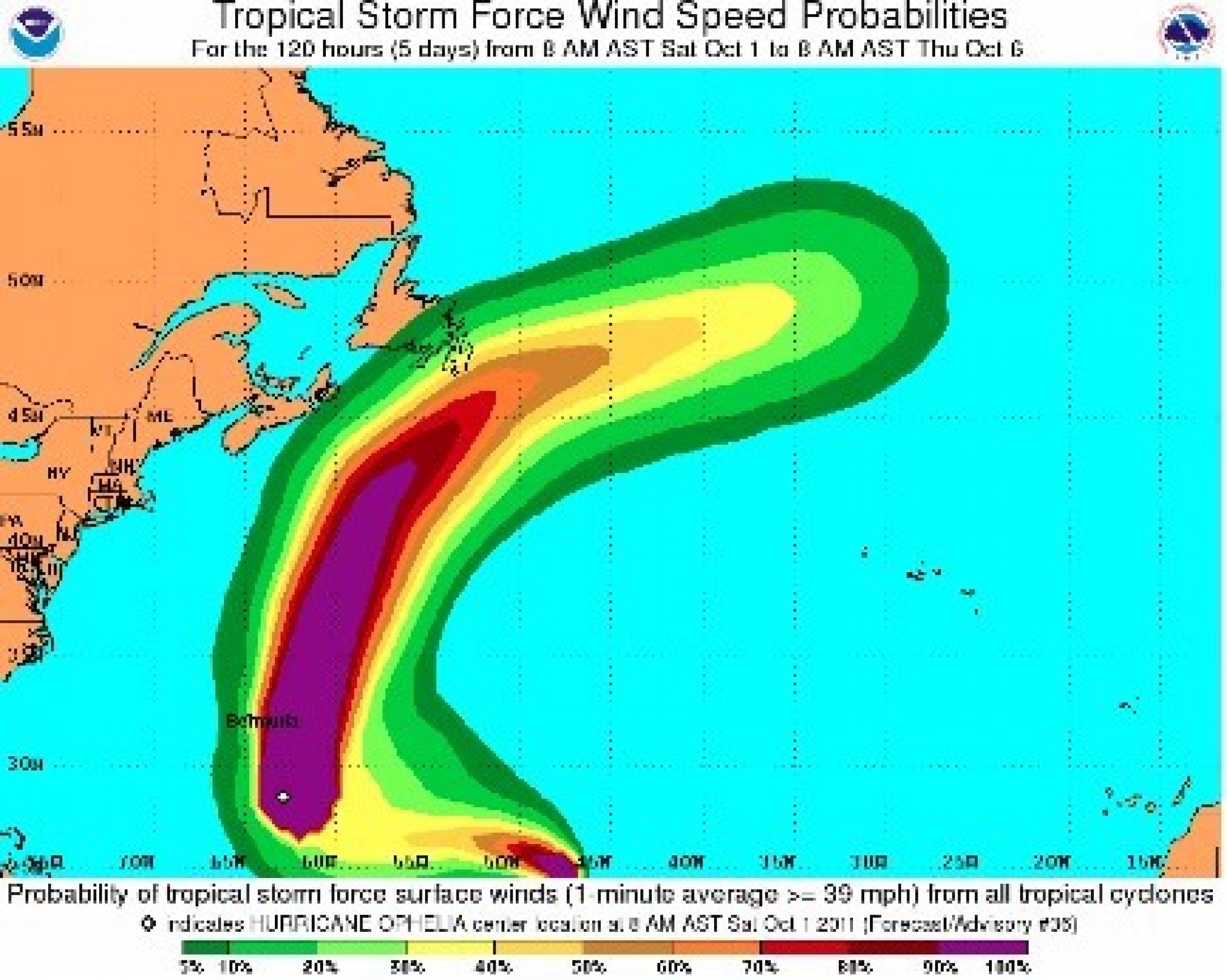Hurricane Ophelia becomes Major Hurricane near Bermuda [TRACK]
Hurricane Ophelia is the fourth hurricane of the 2011 Atlantic hurricane season and the third major storm of the year.
Ophelia formed in the Atlantic nearly two weeks ago and had disintegrated to a tropical wave before it rapidly reformed midweek, growing into a Category 3 hurricane on the Saffir-Simpson Hurricane Wind Scale on Friday.
By midday Saturday, the storm was located about 225 miles south-southeast of Bermuda with maximum sustained winds of 120mph, according to the 11 a.m. EDT alert from the National Hurricane Center in Miami.
On its projected path, the core of Ophelia should pass to the east of Bermuda Saturday evening.
Hurricane-force winds extend outward up to 40 miles from the storm center and tropical-storm-force winds extend outward up to 205 miles mainly to the north and east of the center.
A tropical storm watch is in effect for Bermuda and a tropical storm watch or warning may be required for a portion of the Avalon Peninsula in Newfoundland later on Saturday.
If current projections pan out, Ophelia could graze Newfoundland Monday morning as the storm races up the Atlantic and makes a turn to the north-northeast on Sunday. The storm's strength is likely to fluctuate over the next 24 hours and should begin to weaken on Sunday.
Tropical-storm-force winds are possible for Bermuda starting Saturday afternoon. Forecasters at the National Hurricane Center warn that large swells created by Ophelia will cause hazardous surf conditions along the south shore beaches.
Officials in Canada are monitoring the storm with a watchful eye. Two weeks ago, Hurricane Maria made landfall in Newfoundland as a Category 1 storm. The Canadian island was also hit by another rare hurricane in 2010 when Hurricane Igor tore through eastern Newfoundland, sweeping away bridges, washing out roads, and causing nearly $200 million in damages.
Tropical Storm Philippe
Elsewhere in the Atlantic, Tropical Storm Philippe continued to meander on its ever-fluctuating track.
According to the 11 a.m. EDT alert from the National Hurricane Center in Miami, Philippe is located 1140 miles east-southeast of Bermuda in the Central Atlantic. The storm is packing maximum sustained winds of 50 mph and is moving west-northwest at 9 mph. Philippe is expected to continue in that general direction for the next 24 hours before a gradual turn toward the west on Sunday.
It's unlikely that Philippe will affect any land.
Ophelia and Philippe are the 15th and 16th named storms of the 2011 Atlantic hurricane season. With 16 named storms and one additional unnamed tropical depression, this year is the second busiest season on record. Only the notorious 2005 season had more storms - and there is still two months to go as the season doesn't end until Nov. 30.
However, of the 16 named storms, only 4 have become hurricanes.
Brian McNoldy, a Colorado State researcher, notes on his blog that this is a record low number of hurricanes for such a busy year.
Looking back through the records, any season with 16+ named storms had at least 7 hurricanes, he blogged.
The 2011 hurricane season could wind up being remembered more for its failure to produce hurricanes than its success in producing lots of tropical storms.




© Copyright IBTimes 2024. All rights reserved.






















